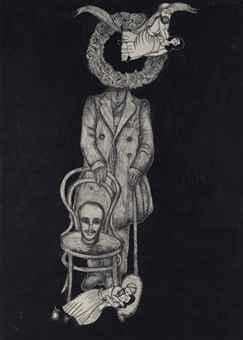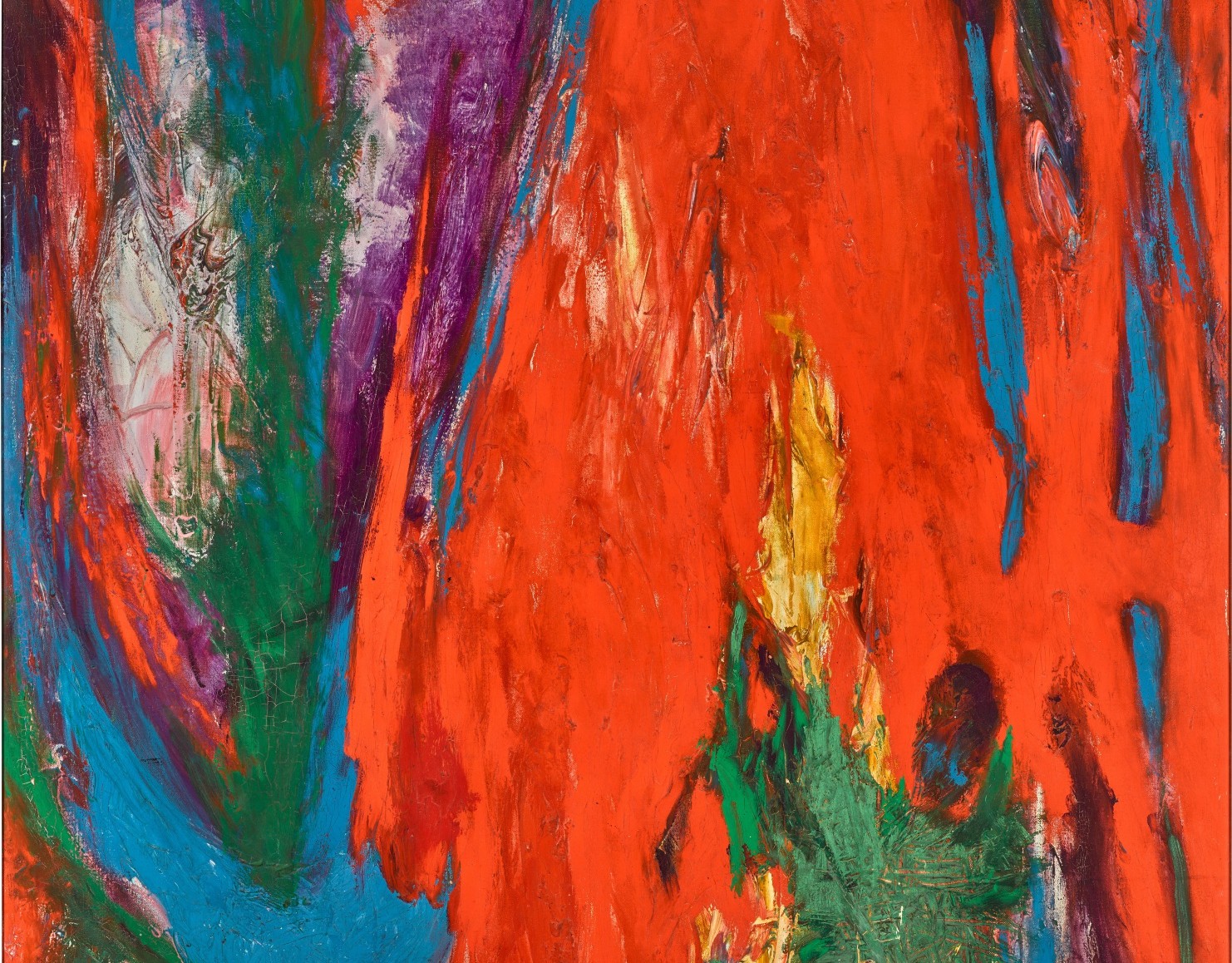About Ardeshir Mohasses
Ardeshir Mohasses (1938–2008), born in Lahijan, Iran, was an influential Iranian designer, illustrator, and caricaturist, renowned for the sharp, critical perspective reflected in his art. Between 1959 and 1962, he studied political science at the Faculty of Law, University of Tehran. He published his first caricatures in 1951 in the satirical magazine Tawfiq, where he continued to contribute until 1959. He later created satirical work for Kayhan newspaper, Ketab-e Hafteh magazine, and other publications.
In 1967, Mohasses held his first solo exhibition at Ghandriz Gallery in Tehran. His works were later shown—both individually and in group exhibitions—around the world. In the early 1970s, his drawings began appearing in international publications such as The New York Times, Graphis, and Jeune Afrique. In 1976, he emigrated to the United States, where he lived until his death in New York in 2008, following a period of illness.
Iranian art historian Ruyin Pakbaz wrote about Mohasses and his distinctive style: “Mohasses was the first Iranian press satirist to assert his independence in choosing both subject matter and method. Through his humorous drawings on social and political themes, and his emphasis on visual expression, he transcended mere comic caricature. His main drawing tool was the Rapidograph pen, while his paintings often incorporated watercolor and colored pencils. He cited the works of Bosch, Bruegel, Daumier, Sani al-Mulk, and Coffeehouse painting as his main influences—though many of his works also clearly drew inspiration from Qajar-era lithographs.”
The Most Expensive Artwork
At Auctions
First Attendance
16 June 2009
# Attendance
83
# Artworks
222
Average Realized Price
3,055 USD
Average Min Estimate
2,339 USD
Average Max Estimate
3,514 USD
Sell-through Rate
85.714%
Average Growth of Artwork Worth
1315.254%
Timeline
Arab, Iranian & Turkish Art / Modern & Contemporary Middle Eastern Art | N°22 auction
15 December
Soft Edge of the Blade Vol. 3 exhibition
10 November
The 24th Tehran - Contemporary Iranian Art auction
3 October
Recovery/ The Seventh Series exhibition
13 June
Shadow exhibition
18 April
On the Path of Iranian Art History exhibition
4 April
For Nowruz exhibition
14 March
Last Frame exhibition
14 March
Modern and Contemporary Collector exhibition
7 February
The 13th Art Expo of Several Generations of Iranian Contemporary Artists exhibition
7 February
Treasure 6 exhibition
10 January
Nov 23 Multi Estate Sale auction
23 November
Nov 16th Multi Estate Sale auction
16 November
Nov 9th Multi Estate Sale auction
9 November
Oct 26th Multi Estate Sale auction
26 October
Timeless Creation exhibition
25 October
Modern & Contemporary Middle East auction
22 October
Online MIDDLE-EAST: Contemporary Arab, Iranian & Turkish Art auction
17 October
Ardeshir Mohasses Artworks exhibition
11 October
The 21st Tehran - Contemporary Iranian Art auction
11 October
3*7/ 21 Works of 3 Caricaturists exhibition
20 September
Sept 14th Multi Estate Sale auction
14 September
To Doubt or not to Doubt exhibition
13 September
Gold & Silver, Fine Art & Collectibles auction
31 August
Resize exhibition
16 August
Aug 3rd Multi Estate Sale auction
3 August
Automotive, Fine Art & Antiques auction
13 July
Middle-East/20th Century Art auction
11 July
Automotive, Fine Art & Collectibles auction
6 July
Treasure 4 exhibition
24 May
A Collection exhibition
10 May
#6 Master Artists auction
24 March
10s of Artworks, 10s of Millions exhibition
8 March
A Glance at Sketching exhibition
8 March
New Year/ New Vision exhibition
23 February
The Artwork of Legendary Artists exhibition
9 February
In Water Color exhibition
2 February
#2 auction
24 December
20th Century Art/Middle East auction
24 October
Beirut-Paris Part II - Middle Eastern Art Online Sale auction
24 July
The Premier Art auction
16 July
Root exhibition
9 June
Testimony of a Journey: The Al Zayani Collection auction
25 April
Auto, Antiques & Collectibles auction
22 April
resize exhibition
13 April
Recovery/ The third series exhibition
10 March
Modern and Contemporary Art auction
31 January
Middle Eastern Modern and Contemporary Part I auction
19 December
We exhibition
24 November
Fine Art, Collectibles & Antiques auction
24 September
Fine Art, Nautical Collection & Antiques auction
17 September
Lotfi x Mashahir Cross 2 exhibition
9 September
Fine Art, Antiques & Collectibles auction
27 August
Art Closer Than Ever exhibition
26 August
Fine Art, Fine Jewelry & Collectibles auction
20 August
Gold & Silver, Antiques & Collectibles auction
13 August
Body Politics exhibition
6 August
Fine Art, Antiques & Collectibles auction
6 August
Fine Art, Jewelry & Collectibles auction
30 July
Fine Jewelry, Art & Musical Instruments auction
23 July
Treasure 1 exhibition
22 July
Fine Art, Jewelry & Collectibles auction
16 July
Art Glass, Trains and Barbie Collection auction
9 July
Fine Art, Fine Jewelry and Collectibles auction
2 July
Continuity exhibition
1 July
Gold and Silver, Fine Art and Antiques auction
25 June
Fine Art, Antiques & Collectibles auction
18 June
EJ's June 4th Fine Art, Jewelry & Collectibles auction
4 June
Fine Art, Antiques & Collectibles auction
28 May
A Selection of Artworks by Ardeshir Mohases exhibition
27 May
Resize exhibition
13 May
Vanishing Point exhibition
6 May
Art, Antiques and Automobiles auction
19 March
Recovery/The Second Series exhibition
4 March
Archive 2 exhibition
25 February
The last event 1400 exhibition
25 February
A Selection of Modern Works from The Laal Collection exhibition
25 February
Opportunity exhibition
13 February
Soft Edge of the Blade exhibition
10 February
Middle Eastern Art Online Sale auction
9 February
Fine Jewelry, Fine Art and Guitars auction
22 January
Mirror reflections exhibition
19 January
10th Collector exhibition
7 January
Fine Art, Jewelry and Furniture auction
1 January
MIDDLE-EAST MODERN & CONTEMPORARY auction
16 December
Sober Weekend exhibition
11 December
Automobiles, Antiques and Collectibles auction
11 December
Recent works of Ardeshir Mohasses exhibition
10 December
Gold and Silver, Fine Art and Collectibles auction
4 December
Automobiles, Fine Art and Collectibles auction
27 November
Fine Art, Antiques and Collectibles auction
20 November
Modern and Contemporary Middle Eastern Art including Baghdadiyat Part II auction
17 November
The Mana Jalalian Collection: A Rare Collection of Iranian Modern Art exhibition
15 November
Fine Art, Antiques and Collectibles auction
13 November
Fine Art, Antiques and Collectibles auction
6 November
Fine Cologne, Attire and Collectibles auction
30 October
9th Collector (Contemporary Art) exhibition
29 October
Fine Jewelry, Antiques and Collectibles auction
23 October
Portrait In Contemporary Aspect exhibition
22 October
Fine Jewelry, Antiques and Collectibles auction
16 October
Summer Selection exhibition
30 July
Ardeshir Mohasses Masterful Drawings exhibition
18 June
Small Artworks collection exhibition
11 June
ART AND ANTIQUES auction
8 May
Middle Eastern Art Online Sale auction
9 March
Souvenir exhibition
2 February
No.8 auction
1 January
Modern and Contemporary Middle Eastern Art auction
24 November
No.6 auction
16 October
Spectacular Estate And Art Sale, Jewelry, Wedgwood and More auction
16 September
Virus of collecting exhibition
4 September
Middle Eastern Art Online auction
6 August
Modern and Contemporary Middle Eastern Art auction
11 June
No.4 auction
9 June
No.3 auction
23 April
No.2 auction
6 March
5th Collector exhibition
24 January
Contemporary Curated auction
19 November
Middle Eastern, Modern and Contemporary Art auction
23 October
20th Century Art / Middle East auction
22 October
Encircle the Apple or Shadowlessness exhibition
27 September
Connoisseur's Look exhibition
12 July
20th Century Art / Middle East auction
30 April
Foad Sharifi Print Makings exhibition
12 April
2018 Collection Selling exhibition
17 January
+۹۶ exhibition
16 February
Hôtel Drouot, Salles 5 et 6, Art Moderne et Contemporain du Moyen-Orient* auction
6 December
Boundless: Dubai auction
13 November
20th Century Art / Middle East auction
23 October
Single Artwork Ardeshir Mohassess exhibition
25 August
Alchemy: Objects of Desire auction
21 April
Modern & Contemporary Arab, Iranian and Turkish Art auction
18 March
Islamic and Indian Art auction
7 October
Islamic and Indian Art auction
8 April
Contemporary Art / Arab & Iranian auction
4 October
Art Moderne et Contemporain Iranien et Arabe auction
24 October
Tableaux Orientalistes et Art Moderne Arabe et Iranien auction
16 June
Ardeshir Mohasses: Art and Satire in Iran exhibition
23 May
Articles
A Report of Sotheby's Middle East Auction, October 2023 28 October 2023
This fall, Sotheby’s is showcasing several important private collections at the heart of its bi-annual 20th Century Art/Middle East sale. From pioneering modernist masters to groundbreaking contemporary artists, one of the binding principles guiding these female-led collections are passion, dedication and the connections and conversations incited by powerful works. It is rare to be...

